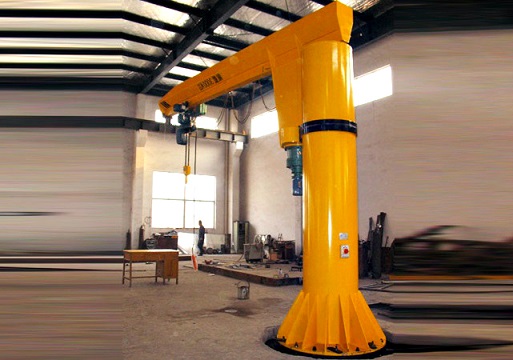01
Sep

Today, the industry requires powerful, flexible and versatile machines, capable to handle a variety of tasks in a cost efficient manner. One category of industrial machines which are heavily used are the jib cranes. These lifting machines can be found in every major production or manufacturing facility where large and bulky items need to be lifted and moved from one location to another. A jib crane is a flexible and efficient lifting equipment that saves both time and money while increasing the productivity. It can improve the work flow and the material handling efficiency. There are different jib crane models on the market, and each model is used for specific lifting operation. Generally, there are three jib crane types: free standing jib cranes, mast type jib cranes, and wall mounted jib cranes. Although used for the same purpose, every model is different in terms of design, configuration and specifications.
Choosing a jib crane for specific lifting operation requires several things to be closely considered. When choosing which jib crane to use, you should pay close attention on the operation type, structure, available space, necessary options, cost of operation and installation. Consider the following simple guide and pay a close attention on the factors listed below in order to choose the right jib crane that can promise you increased productivity, maximum efficiency, all that at minimum operating costs.
Capacity. You should look for a jib crane with the right lifting capacity for performing the lifting applications without any problems. Choosing a jib crane that cannot match the lifting applications in your facility will cause more problems than benefits.
Rotation. One of the main things that need to be closely considered when choosing a jib crane is the rotation. Different jib crane models move and rotate in different ways. For example, the free standing and the mast type jib cranes rotate for 360 degrees, while the wall mounted jib cranes rotate for 200 degrees.
Underboom Height. This is the distance from the floor in your working facility to the underside of the jib crane. The amount of lifting distance and the size of the hoist should also be considered.
Total Height. This is the highest point of the jib crane after being installed in the facility. You should ensure that the crane with its total height will be able to move and rotate freely.
Power. How the jib crane is going to be be powered is another important consideration. You should determine how the power is going to be supplied, and whether all parts of the crane need to be powered in the same way.
Installation. The jib crane that is going to be used should be easy for installation. However, the location and the available working area in the facility will dictate which jib crane to be selected for proper installation. For example, the free standing jib cranes need reinforced concrete foundations which in the end can cost more than the jib crane.